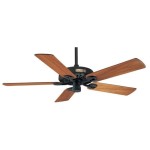Essential Considerations for Lighting Rooms with Low Ceilings: A Comprehensive Guide
Lighting plays a crucial role in shaping the ambiance and functionality of any room, and low-ceilinged spaces present unique challenges. To effectively illuminate these rooms while maintaining a sense of spaciousness, it is essential to carefully consider the following aspects:
1. Utilize Indirect Lighting
Indirect lighting techniques involve bouncing light off surfaces before it reaches the eye, creating a more diffused and flattering illumination. This approach is particularly beneficial in rooms with low ceilings as it minimizes harsh shadows and bright spots. Consider using indirect light fixtures such as wall-mounted sconces, cove lighting, and floor lamps that direct light upwards or at angles.
2. Emphasize Vertical Elements
Drawing attention to vertical surfaces in a low-ceilinged room can create an illusion of height. Use floor-to-ceiling curtains to frame windows and add height to the space. Mount art and picture frames vertically to accentuate the vertical dimension. Consider installing pendant lights that hang from the ceiling and feature long, linear shades to emphasize height.
3. Choose Light Colors and Finishes
Light-colored walls and ceilings reflect more light than darker hues, making the room appear brighter and more spacious. Opt for paint colors with a warm undertone, such as beige, cream, or light gray, to create a welcoming atmosphere. Glossy finishes also reflect more light than matte finishes, contributing to the illusion of a larger space.
4. Layer Multiple Light Sources
Incorporating a variety of light sources creates depth and interest in a room. Combine natural light from windows with artificial light sources such as overhead lights, accent lights, and task lighting. Use dimmers to adjust the intensity of light and create different moods throughout the day.
5. Consider Recessed Lighting
Recessed lighting fixtures, also known as downlights, can be discreetly installed into the ceiling, providing general illumination without visually cluttering the space. Choose recessed lights with adjustable beams to direct light where it is most needed. Avoid using too many recessed lights close together, as this can create a crowded and uninviting atmosphere.
6. Avoid Overcrowding with Fixtures
While it is important to have adequate lighting, it is equally crucial to avoid overcrowding the room with too many fixtures. Too many lights can create a cluttered and overwhelming effect, making the room feel smaller. Instead, opt for a few well-placed fixtures that provide balanced illumination.
7. Use Mirrors and Glossy Surfaces
Mirrors and glossy surfaces reflect light, creating the illusion of more space. Place mirrors opposite windows to reflect natural light into the room. Use glossy tiles or furniture with polished surfaces to bounce light around and make the room appear larger. Avoid using too many dark or opaque surfaces, as these can absorb light and make the room feel smaller.
Conclusion
By incorporating these essential aspects into your lighting scheme, you can effectively illuminate rooms with low ceilings without compromising on style or functionality. Remember to utilize indirect lighting, emphasize vertical elements, choose light colors and finishes, layer multiple light sources, consider recessed lighting, avoid overcrowding with fixtures, and use mirrors and glossy surfaces to create a spacious and inviting atmosphere.

How To Light A Room With Low Ceilings

Tips For Lighting A Room With Low Ceilings Lightstyle Of Tampa Bay

How To Light A Space With Low Ceilings The Lightbulb Co

Low Ceiling Lighting Ideas For Your Home Designcafe

25 Of The Best Living Room Lighting Ideas For Low Ceilings Lightopia

15 Clever Lighting Ideas For Low Ceilings 2024 Our Picks

Low Ceiling Lighting Ideas For Your Home Designcafe

15 Clever Lighting Ideas For Low Ceilings 2024 Our Picks

How To Light Up Spaces With Low Ceilings

25 Of The Best Living Room Lighting Ideas For Low Ceilings Lightopia
Related Posts







